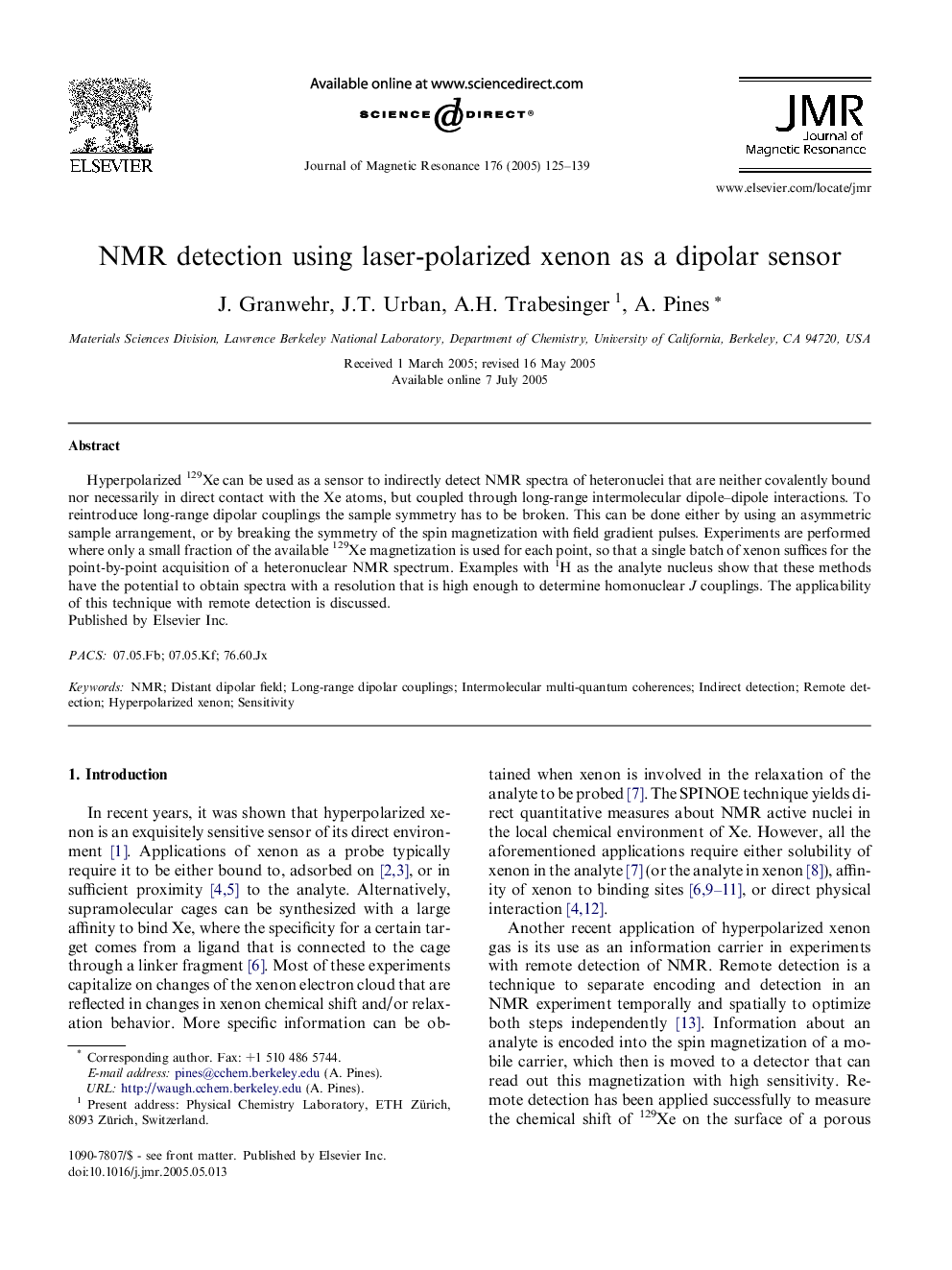| Article ID | Journal | Published Year | Pages | File Type |
|---|---|---|---|---|
| 9587324 | Journal of Magnetic Resonance | 2005 | 15 Pages |
Abstract
Hyperpolarized 129Xe can be used as a sensor to indirectly detect NMR spectra of heteronuclei that are neither covalently bound nor necessarily in direct contact with the Xe atoms, but coupled through long-range intermolecular dipole-dipole interactions. To reintroduce long-range dipolar couplings the sample symmetry has to be broken. This can be done either by using an asymmetric sample arrangement, or by breaking the symmetry of the spin magnetization with field gradient pulses. Experiments are performed where only a small fraction of the available 129Xe magnetization is used for each point, so that a single batch of xenon suffices for the point-by-point acquisition of a heteronuclear NMR spectrum. Examples with 1H as the analyte nucleus show that these methods have the potential to obtain spectra with a resolution that is high enough to determine homonuclear J couplings. The applicability of this technique with remote detection is discussed.
Keywords
Related Topics
Physical Sciences and Engineering
Chemistry
Physical and Theoretical Chemistry
Authors
J. Granwehr, J.T. Urban, A.H. Trabesinger, A. Pines,
